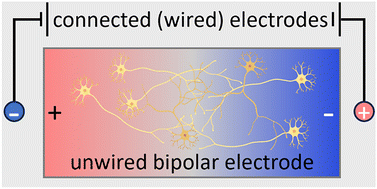Wireless control of nerve growth using bipolar electrodes: a new paradigm in electrostimulation
Abstract
Electrical activity underpins all life, but is most familiar in the nervous system, where long range electrical signalling is essential for function. When this is lost (e.g., traumatic injury) or it becomes inefficient (e.g., demyelination), the use of external fields can compensate for at least some functional deficits. However, its potential to also promote biological repair at the cell level is underplayed despite abundant in vitro evidence for control of neuron growth. This perspective article considers specifically the emerging possibility of achieving cell growth through the interaction of external electric fields using conducting materials as unwired bipolar electrodes, and without intending stimulation of neuron electrical activity to be the primary consequence. The use of a wireless method to create electrical interactions represents a paradigm shift and may allow new applications in vivo where physical wiring is not possible. Within that scheme of thought an evaluation of specific materials and their dynamic responses as bipolar unwired electrodes is summarized and correlated with changes in dynamic nerve growth during stimulation, suggesting possible future schemes to achieve neural growth using bipolar unwired electrodes with specific characteristics. This strategy emphasizes how nerve growth can be encouraged at injury sites wirelessly to induce repair, as opposed to implanting devices that may substitute the neural signals.

- This article is part of the themed collections: Biomaterials Science Recent Review Articles, 2024 and Biomaterials Science Recent HOT Articles


 Please wait while we load your content...
Please wait while we load your content...